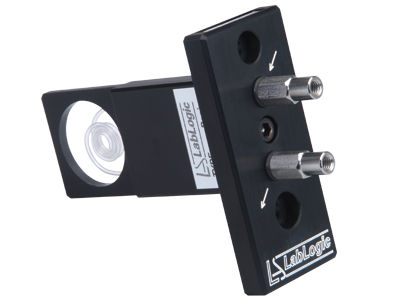Packed cells offer the possibility of substantial operating economy both because no scintillator solution is needed and waste disposal problems are significantly reduced. Another advantage is that they are essentially non-destructive to the sample, allowing it to be passed directly into another instrument, e.g., a mass spectrometer, or to be collected for some other application. However, there are disadvantages; if improperly employed they are too easily contaminated, 3H counting efficiency is always low, they require lengthy dark adaptation to reach their lowest backgrounds which are never as low as with liquid scintillator, double isotope counting is not really possible, and replacement costs are relatively high.
| Code | Description | Volume (ul) | Window Diameter |
Maximum Pressure |
Tube Size | Particle Size (um) |
| DI-BXX-10 | Calcium Fluoride Packed | 201-600 | 1-1/8" | 200 psi | 1/8" | 63-90 |
| DI-BXX-12 | Yttrium Silicate Packed | 201-600 | 1-1/8" | 200 psi | 1/8" | 63-90 |
| DI-BXX-11 | Lithium Glass Packed | 201-600 | 1-1/8" | 200 psi | 1/8" | 63-90 |
| DI-BXX-30 | High Pressure, Calcium Fluoride Packed |
25-100 | 3/4" | 800 psi | 1/8" | 38-63 |
| DI-BXX-31 | High Pressure, Yttrium Silicate Packed |
25-100 | 3/4" | 800 psi | 1/8" | 38-63 |
| DI-BXX-32 | High Pressure, Lithium Glass Packed |
25-100 | 3/4" | 800 psi | 1/8" | 38-63 |
| DI-BXX-33 | High Pressure, Calcium Fluoride Packed |
101-200 | 7/8" | 800 psi | 1/8" | 38-63 |
| DI-BXX-34 | High Pressure, Yttrium Silicate Packed |
101-200 | 7/8" | 800 psi | 1/8" | 38-63 |
| DI-BXX-35 | High Pressure, Lithium Glass Packed |
101-200 | 7/8" | 800 psi | 1/8" | 38-63 |
| DI-BXX-27 | Ultra High Pressure, Calcium Fluoride Packed |
25-200 | 1-1/8" | 3000 psi | 1/8" | 38-63 |
| DI-BXX-28 | Ultra High Pressure, Yttrium Silicate Packed |
25-200 | 1-1/8" | 3000 psi | 1/8" | 38-63 |
| DI-BXX-29 | Ultra High Pressure, Lithium Glass Packed |
25-200 | 1-1/8" | 3000 psi | 1/8" | 38-63 |
| DI-BXX-24 | High Flow, High Pressure, Calcium Fluoride Packed |
25-200 | 1-1/8" | 800 psi | 1/8" | 90-150 |
| DI-BXX-25 | High Flow, High Pressure, Yttrium Silicate Packed |
25-200 | 1-1/8" | 800 psi | 1/8" | 90-150 |
| DI-BXX-26 | High Flow, High Pressure, Lithium Glass Packed |
25-200 | 1-1/8" | 800 psi | 1/8" | 90-150 |
Documents
Sorry, there are no documents available for this product.


